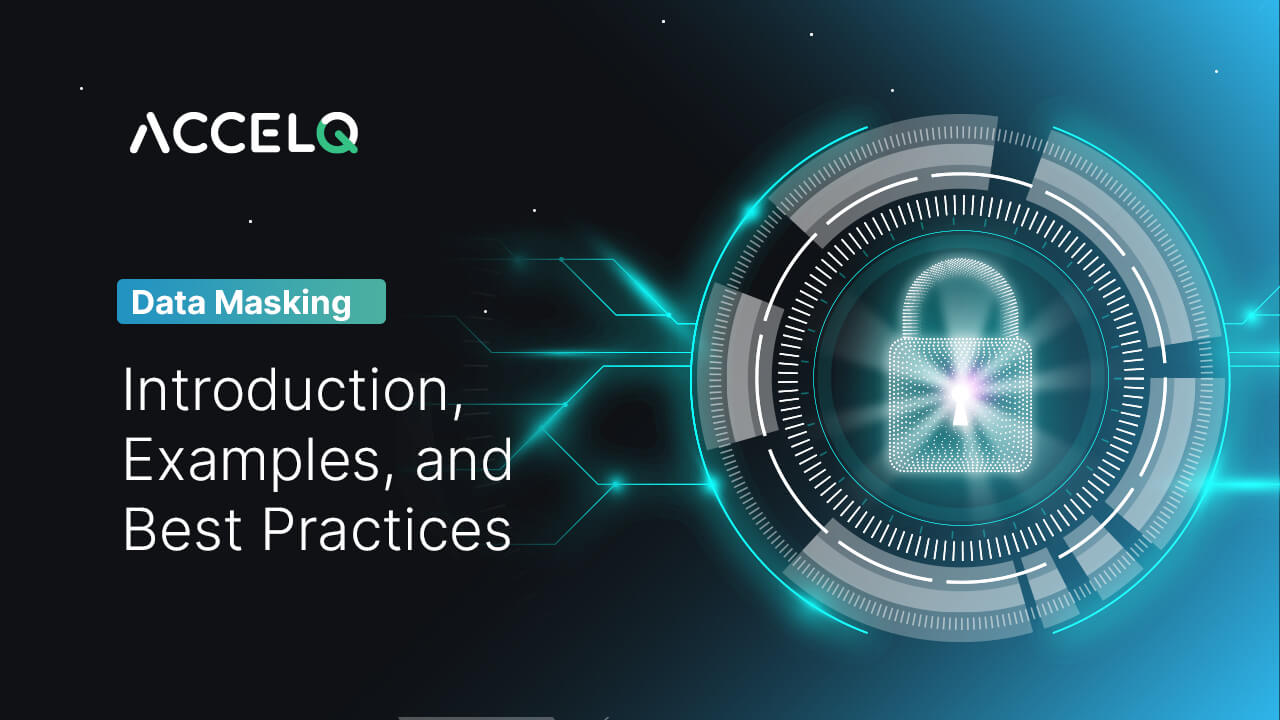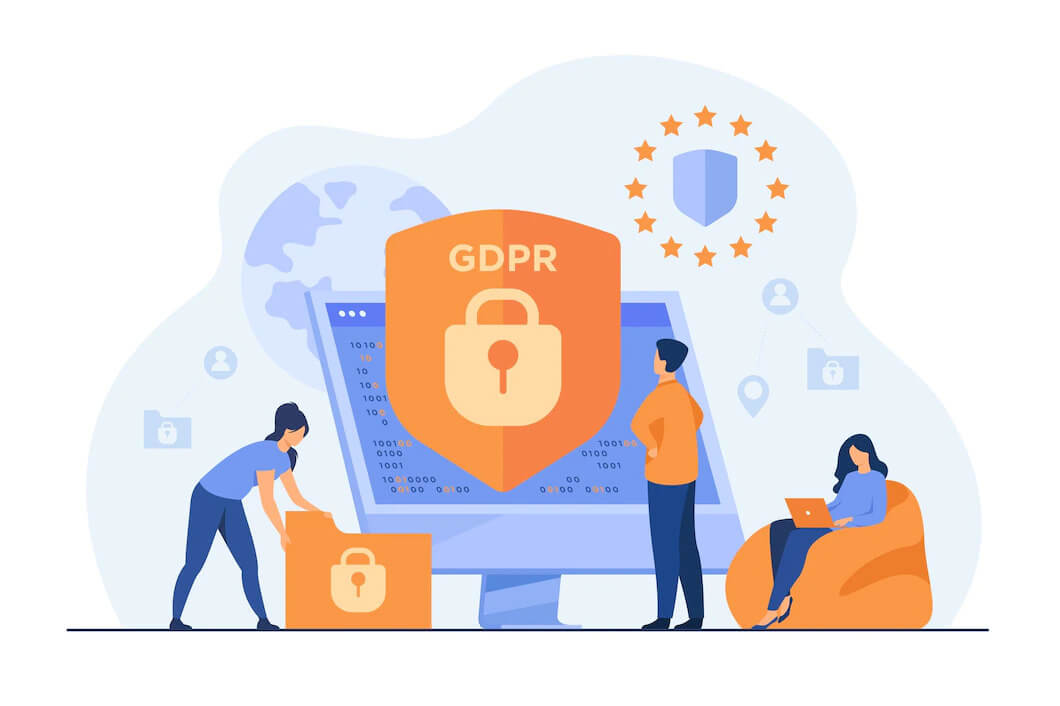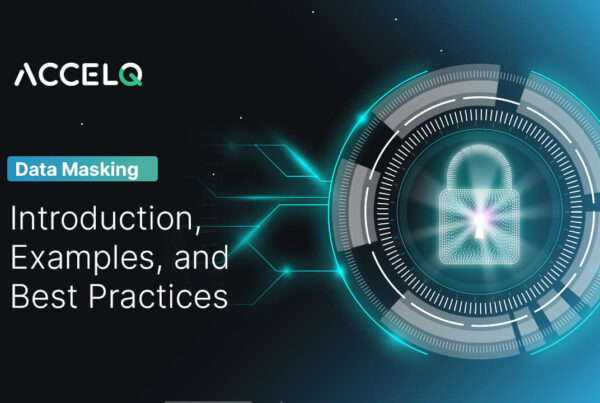
In this guide, we shall talk about data masking, why it is important, and introduce examples and best practices.
What Is Data Masking?

Data privacy and security have emerged as top priorities for enterprises across industry domains. Each year, data breaches expose confidential data to cyber criminals and cause organizations to lose millions of dollars.
In 2021, the average cost of a data breach was estimated at $4.24 million.
Data masking is the process of masking sensitive data from unauthorized entities by replacing it with fake data. Effectively, it can modify the data values while maintaining the same format. It uses a variety of techniques like encryption, word substitution, and character shuffling.
Data masking aims to create an alternate version of the Data that cannot be identified or reverse-engineered by hackers. It is commonly used in the following data elements:
- Payment card information includes an individual’s debit or credit card numbers to handle payment transactions.
- Personal identification information can identify a person or individual. This includes data like full name, social security number, or passport number.
- Health information includes any individual’s health or medical records. Data includes health insurance details, previous ailments, and demographic data.
- Intellectual data includes any patented information, like inventions, business plans, product designs, and specifications, that can be susceptible to theft or unauthorized access.
Get Started for free today.
No credit card needed | No obligations
Why is Data Masking important?

In today's environment of data breaches and cyberattacks, data masking enables businesses to secure and protect their valuable data. Data masking can protect sensitive business data from a variety of threats, including:
Insider Threats
This includes any threats originating from inside the organization. It can include employees who have malicious intent to steal data or employees who are not following security protocols.
For example, customer support teams can access customer data, including their credit card details. Data masking can control or restrict customer details.
Data Breaches
No matter the security standards, hackers can still gain unauthorized access to stored data, thus causing a data breach. While data masking cannot stop breaches, hackers cannot fully exploit masked data to their advantage.
Regulatory Compliance
In the modern age, organizations need to comply with industry regulations like the General Data Protection Regulation (GDPR). Non-compliance can result in heavy penalties, fines, and loss of business trust. Data masking helps organizations comply with regulations related to data security and privacy.
Data Masking - Examples
Data masking uses a variety of techniques to modify the data, each of which has its advantages. Here are some examples of data masking:
Data Substitution
Here, data masking substitutes data values (like name or personal details) with fake and alternative values. For example, the customer's name is replaced with random names (or a set of special symbols or characters).
Data Shuffling
Here, data masking rearranges sensitive data like customer names or account numbers with a random sequence. For instance, switching between actual customer names across the database records.
Nulling
Here, parts of a confidential data piece appear "null" or missing when viewed by any unauthorized user. For instance, parts of a credit card number can be replaced with "X," thus restricting its visibility to unauthorized users.
Data Encryption
Here, unauthorized users need a decryption key to access the encrypted data. This is the most advanced form of data masking but is difficult to implement.
Data Masking – Best Practices
Organizations can deploy various techniques of data masking to protect their data. No matter which method, here are some best practices that enable organizations to leverage the benefits of data masking:
1. Identify the Data to Mask
Before implementing data masking, companies must first identify the sensitive data that they want to mask. Companies don't need to mask every piece of sensitive data. Besides identifying the data, they must also know the following:
- The location of the sensitive data
- The authorized personnel who can access this data
- How the data is used
Additionally, organizations must identify data from both production and non-production environments. Depending on the size and complexity of the data, this necessary practice can consume a lot of time to complete.
2. Define the Data Masking Technique
Typically, in any complex data environment, enterprises must not use a single data masking tool and technique for all their requirements. Based on their allocated budget and data security requirements, each business function (or department) should select the best tool or technique that suits their requirements.
Additionally, they need to synchronize the data masking techniques across the enterprise to deal with the same data type. This is crucial for preserving referential integrity.
3. Make Data Masking Irreversible
The entire purpose of data masking is to make it irreversible and protect data from unauthorized users. Data masking is ineffective if hackers can easily unmask the data and convert it to its original form.
For instance, in the data substitution technique, hackers must not have access to the lookup files that store the substituted data. Organizations must also establish guidelines for authorized personnel to access data masking algorithms.
4. Protect Your Data Masking Algorithms
Organizations must also protect their masking algorithms from unauthorized access. If hackers can learn about the specific algorithms, they can easily reverse-engineer large volumes of masked data. Among authorized users, only data owners (from respective departments) must access the specific algorithms and data lists.
Conclusion
To summarize, organizations must use data masking to protect their sensitive data from unauthorized access. ACCELQ has simplified test automation with its data-driven testing approach. Our codeless test automation platform is designed for faster execution and improved efficiency.
Are you looking to automate your software testing efforts? We can assist you. Sign-up for a product demo today!
FAQ
1. What is data masking in cybersecurity?
Also known as data obfuscation, data masking modifies sensitive data such that it can provide limited value to unauthorized users or hackers.
2. Why is data masking required?
Data masking protects all sensitive information from internal and external threats. It creates a similar version of the data that is useful for software testing and user training.
3. Why is masking necessary in image processing?
Masking in image processing is the process of using a "smaller" image piece to modify a larger image.
Related Posts
 The Complete Guide to Data Masking
The Complete Guide to Data Masking
The Complete Guide to Data Masking
 What is Integration Testing? A Comprehensive Guide
What is Integration Testing? A Comprehensive Guide


































